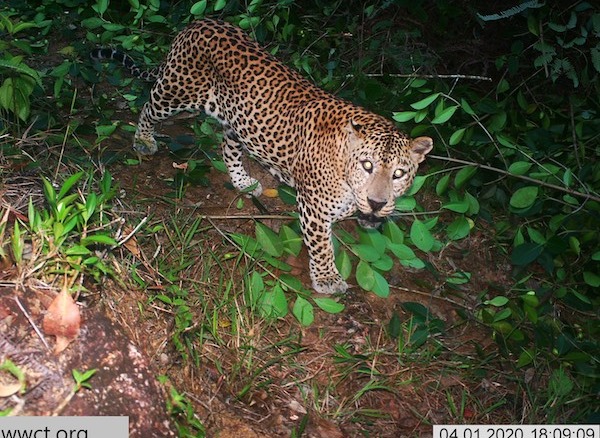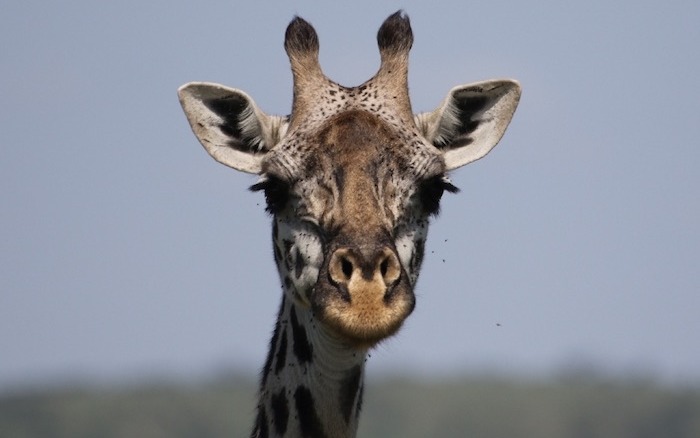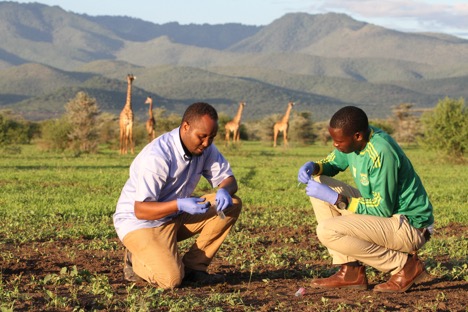Check us out!

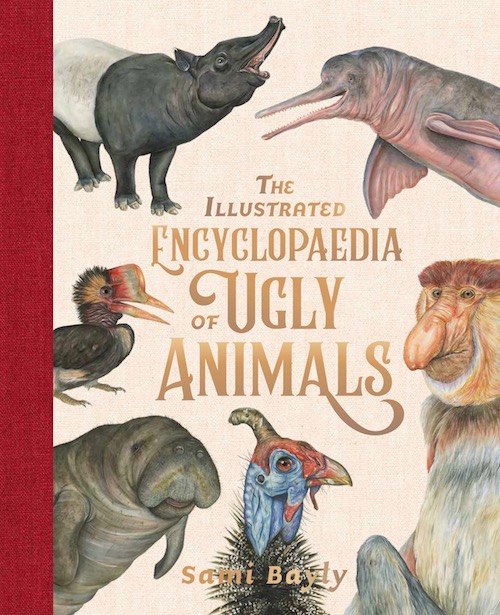
Both books published by Lothian/Hachette Australia.
Get arty with
Sami Bayly
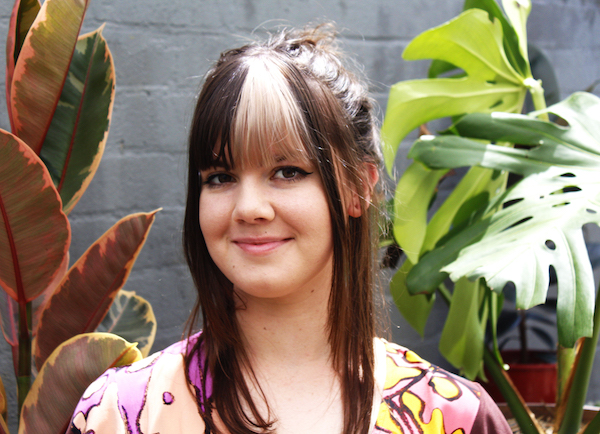
Sami Bayly loves to paint! Sami is a natural history illustrator who recently wrote and illustrated two books: The Illustrated Encyclopaedia of Ugly Animals and The Illustrated Encyclopaedia of Dangerous Animals, published by Lothian/Hachette Australia. Sami lives in Australia.
Read on to learn how Sami creates her vibrant artworks and why she takes inspiration from nature.
Tell us about the goal of your work as a natural history illustrator? What impact do you hope your work will have on your audience?
Sami: My goal in writing and illustrating a children’s book on ugly and dangerous animals was to really shine a light on the misunderstood and often unfairly treated creatures in the animal kingdom.
People can sometimes be scared of something that is different and for animals, this can sometimes have an impact on their wellbeing and survival.
I wanted to explain why these creatures have evolved to look the way they do, the reasons why they have developed these dangerous abilities, and, in turn, why they are so important to the environment.
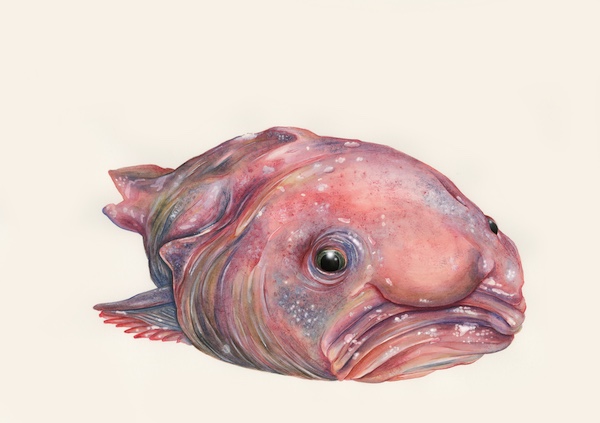
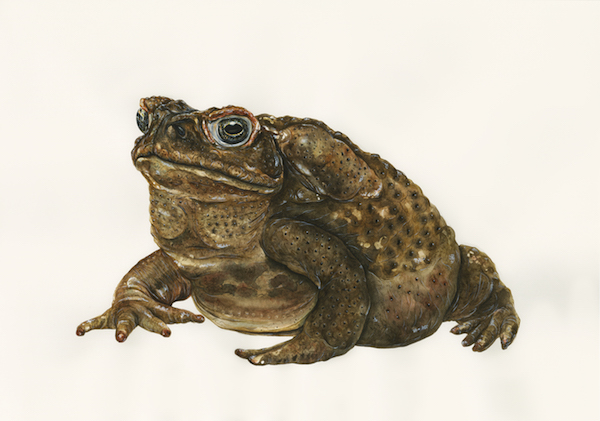
Above: original artworks from The Illustrated Encyclopaedia of Ugly Animals and The Illustrated Encyclopaedia of Dangerous Animals, published by Lothian/Hachette Australia.
How did you go about creating your books?
Sami: There is a lot of work that goes into creating a book, and as both the writer and illustrator, I spent around 12 months on The Illustrated Encyclopaedia of Ugly Animals and 6 months on The Illustrated Encyclopaedia of Dangerous Animals.
A typical day would usually start around 9–10 am and not finish until around 10–11 pm. Usually having chosen the animal prior, I would set up my watercolors and start painting, either listening to music or watching something on YouTube in the background. Each animal illustration was done on A3 paper and would take around 1–3 days to complete.
I have worked with watercolors since I was in my second year of university and haven’t turned back since. Although struggling when I first used them, I made sure to persevere and continue practicing until I noticed improvements.
Watercolors have the ability to create high levels of detail, vibrant colours and realistic textures, while also being relatively quick and clean to work with.
Two years and many artworks later, I was confident enough to begin illustrating my first book.


Photographs above courtesy of @HUNTERhunter and @shanrosephotography
When you complete a project, how do you hope that it will help people better understand and conserve the animals you depict?
Sami: My aim when I finished my books was that not only kids, but their parents, grandparents, teachers, and others would look at the planet a little differently.
I hope my books help people to understand the consequences that our actions can have on the environment and encourage them to make the right choices so that we can appreciate and take care of the beautiful ecosystems around us.
Making good choices could be looking into the foods we eat, the industries we support, or even just finding an “unusual” creature to love that we might not have even heard of before.
What do you want kids to know about the animals you depict that they may not know?
Sami: I really want the reader to see a different side of an animal and its habitat that they might not have known or thought of before.
I want kids to be able to go outside into their backyard or into a zoo, look at an unusual animal and think about why that creature might have evolved to look or act the way it does. Could it maybe be to protect itself from predators, to assist it when it eats, or maybe to attract a mate?
I hope it helps kids think critically about the ecosystem and, in turn, make the right choices when growing up so that it helps to create a better world for themselves and the plants and animals within it.
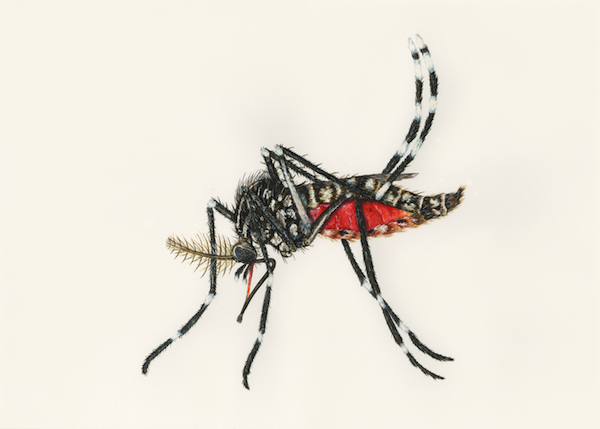
Above: original artwork from The Illustrated Encyclopaedia of Dangerous Animals, published by Lothian/Hachette Australia.
How did you become interested in creating art about wildlife/nature?
Sami: I was always interested in drawing and other creative activities as a kid.
My mum would often paint massive portraits of my pets and would decorate the house with them, so it wasn’t long until I was doing my best to draw everything I could. This included things like my pets, self-portraits, the room around me, and DVD covers.
When I got to year 12 in school, I was thinking about what art pathway I would follow to find my dream career, being an illustrator. Not long after, my mum told me about a Bachelor of Natural History Illustration at the University of Newcastle in Australia, and I enrolled. Five years later I finished the degree with honors and an even bigger obsession with the natural world.
What advice do you have for young people who are interested in becoming artists with a focus on wildlife/nature?
Sami: My suggestion is to paint, draw, or create whatever is in your area! Head down to your local park, zoo, or even sit in your playground or backyard and you will find nature everywhere around you. It is a great way to see what sorts of creatures, environments, or habitats you are surrounded by and how they shape your community.
Maybe your drawing will be of the local magpie that sits up high in the trees watching the children ride by below on their bicylces. Or maybe you will draw the worms that travel through the dirt beneath you. They all have a story to tell and an artwork waiting to be created of them.
Can you describe something particularly inspiring or exciting that’s happened during the course of your work?
Sami: Whilst working on The Illustrated Encyclopaedia of Ugly Animals, I travelled overseas to Borneo where I was able to see the proboscis monkey and orangutan in both sanctuaries and in the wild. Being able to see the beauty and innocence in their eyes really inspired me to push through the tough workload and understand the importance of these creatures to the environment.
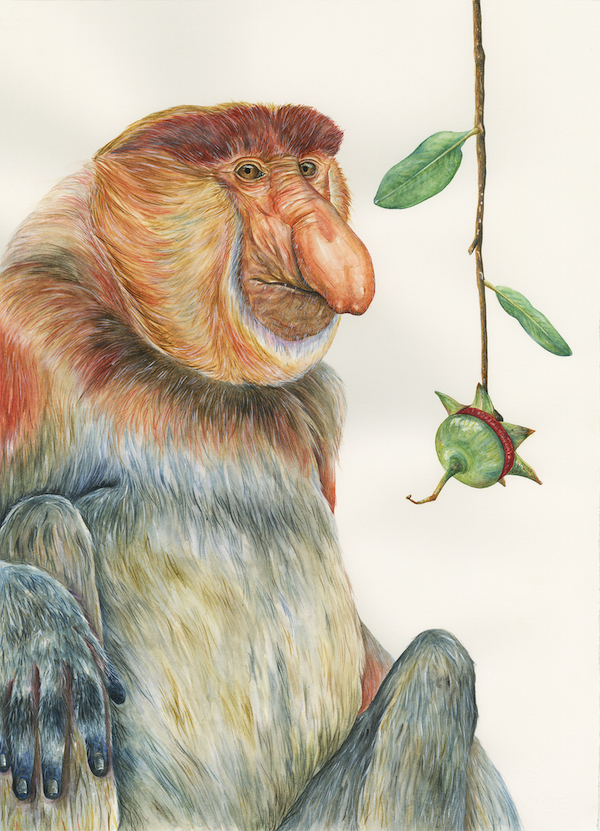
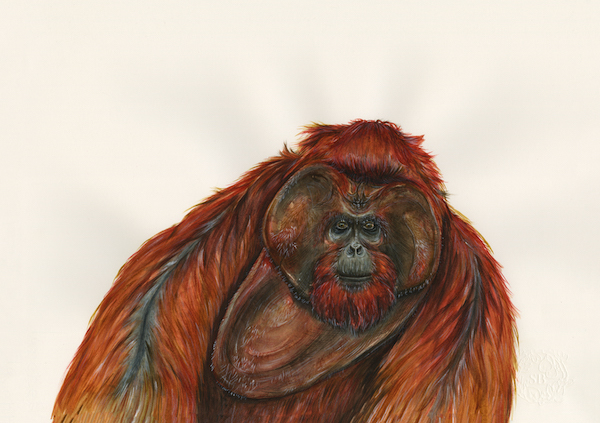
Above: original artworks from The Illustrated Encyclopaedia of Ugly Animals, published by Lothian/Hachette Australia.


